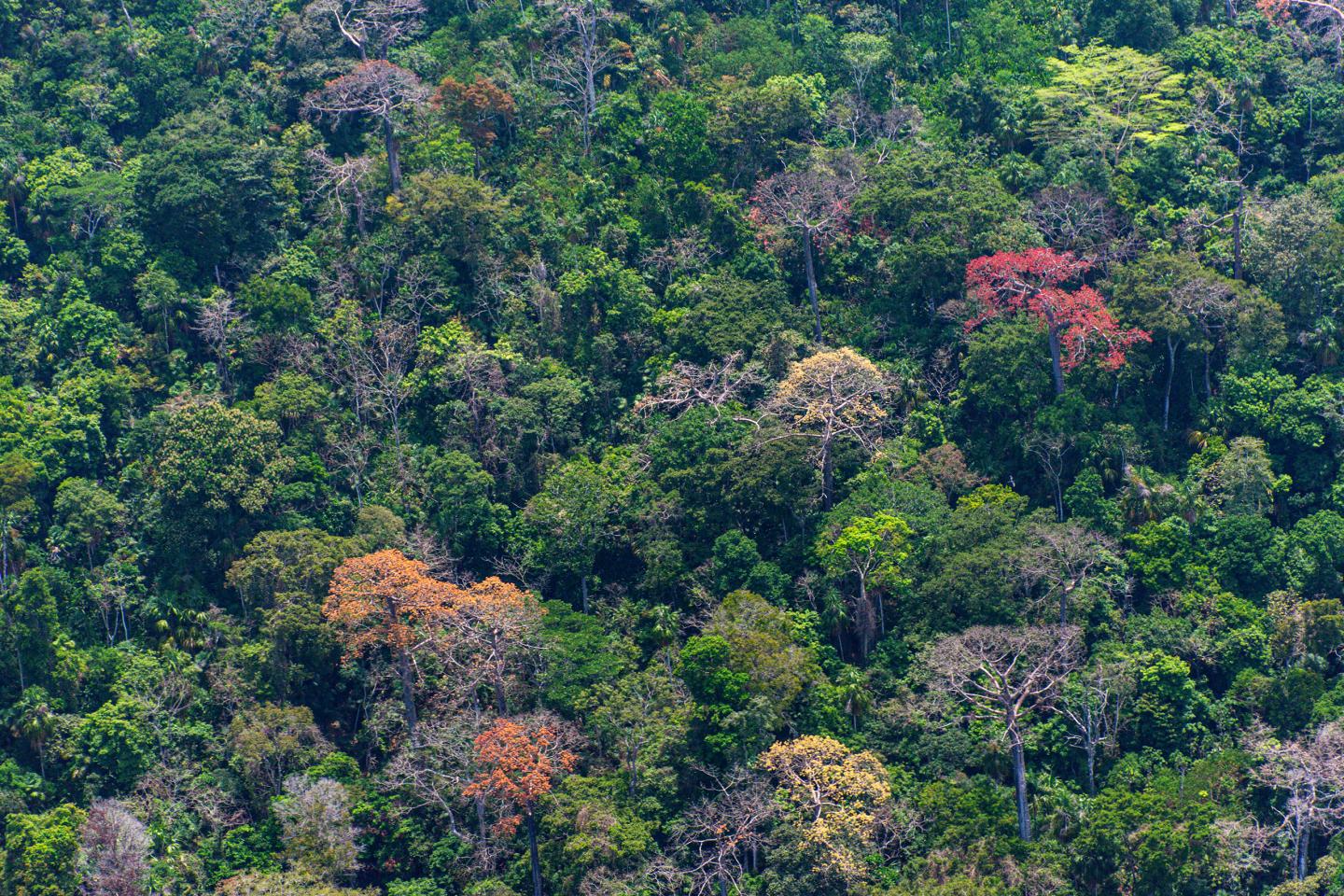
Credit: Smithsonian Tropical Research Institute photo
All living things have tipping points: points of no return, beyond which they cannot thrive. A new report in Science shows that maximum daily temperatures above 32.2 degrees Celsius (about 90 degrees Fahrenheit) cause tropical forests to lose stored carbon more quickly. To prevent this escape of carbon into the atmosphere, the authors, including three scientists affiliated with the Smithsonian Tropical Research Institute (STRI) in Panama, recommend immediate steps to conserve tropical forests and stabilize the climate.
Carbon dioxide is an important greenhouse gas, released as fossil fuels are burned. It is absorbed by trees as they grow and stored as wood. When trees get too hot and dry, they may close the pores in their leaves to save water, but that also prevents them from taking in more carbon. And when trees die, they release stored carbon back into the atmosphere.
Tropical forests hold about 40% of all the carbon stored by land plants. For this study, researchers measured the ability of tropical forests in different sites to store carbon.
“Tropical forests grow across a wide range of climate conditions,” said Stuart Davies, director of the Smithsonian’s Forest Global Earth Observatories (ForestGEO), a worldwide network of 70 forest study sites in 27 countries. “By examining forests across the tropics, we can assess their resilience and responses to changes in global temperatures. Many other studies explored how individual forests respond to short-term climatic fluctuations. This study takes a novel approach by exploring the implications of thermal conditions currently experienced by all tropical forests.”
By comparing carbon storage in trees at almost 600 sites around the world that are part of several different forest monitoring initiatives: RAINFOR, AfriTRON, T-FORCES and ForestGEO, the huge research team led by Martin Sullivan from the University of Leeds and Manchester Metropolitan University found major differences in the amount of carbon stored by tropical forests in South America, Africa, Asia and Australia. South American forests store less carbon than forests in the Old World, perhaps due to evolutionary differences in which tree species are growing there.
They also found that the two most important factors predicting how much carbon is lost by forests are the maximum daily temperature and the amount of precipitation during the driest times of the year.
As temperatures reach 32.2 degrees Celsius, carbon is released much faster. Trees can deal with increases in the minimum nighttime temperature (a global warming phenomenon observed at some sites), but not with increases in maximum daytime temperature.
They predict that South American forests will be the most affected by global warming because temperatures there are already higher than on other continents and the projections for future warming are also highest for this region. Increasing carbon in the atmosphere may counterbalance some of this loss, but would also exacerbate warming.
Forests can adapt to warming temperatures, but it takes time. Tree species that cannot take the heat die and are gradually replaced by more heat-tolerant species. But that may take several human generations.
“This study highlights the importance of protecting tropical forests and stabilizing the Earth’s climate,” said Jefferson Hall, co-author and director of the Smithsonian’s Agua Salud Project in Panama. “One important tool will be to find novel ways to restore degraded land, like planting tree species that help make tropical forests more resilient to the realities of the 21st century.”
The Agua Salud project asks how native tree species adapted to an area can be used to manage water, store carbon and promote biodiversity conservation at a critical point where North and South America connect.
It is also noted that one of the first permanent tropical forest study sites in the world, located at STRI’s research station on Barro Colorado Island in Panama, is currently not being monitored for the first time in 40 years as a result of the COVID-19 pandemic, giving scientists less of a handle on any climate change effects that may be in play.
Steve Paton, director of STRI’s physical monitoring program, notes that in 2019 there were 32 days with maximum temperatures over 32 degrees Celsius at a weather station in the forest canopy on the island, and a first glance at his data indicates that these exceptionally hot days are becoming more common.
###
Media Contact
Elisabeth king
[email protected]
Original Source
https:/
Related Journal Article
http://dx.





